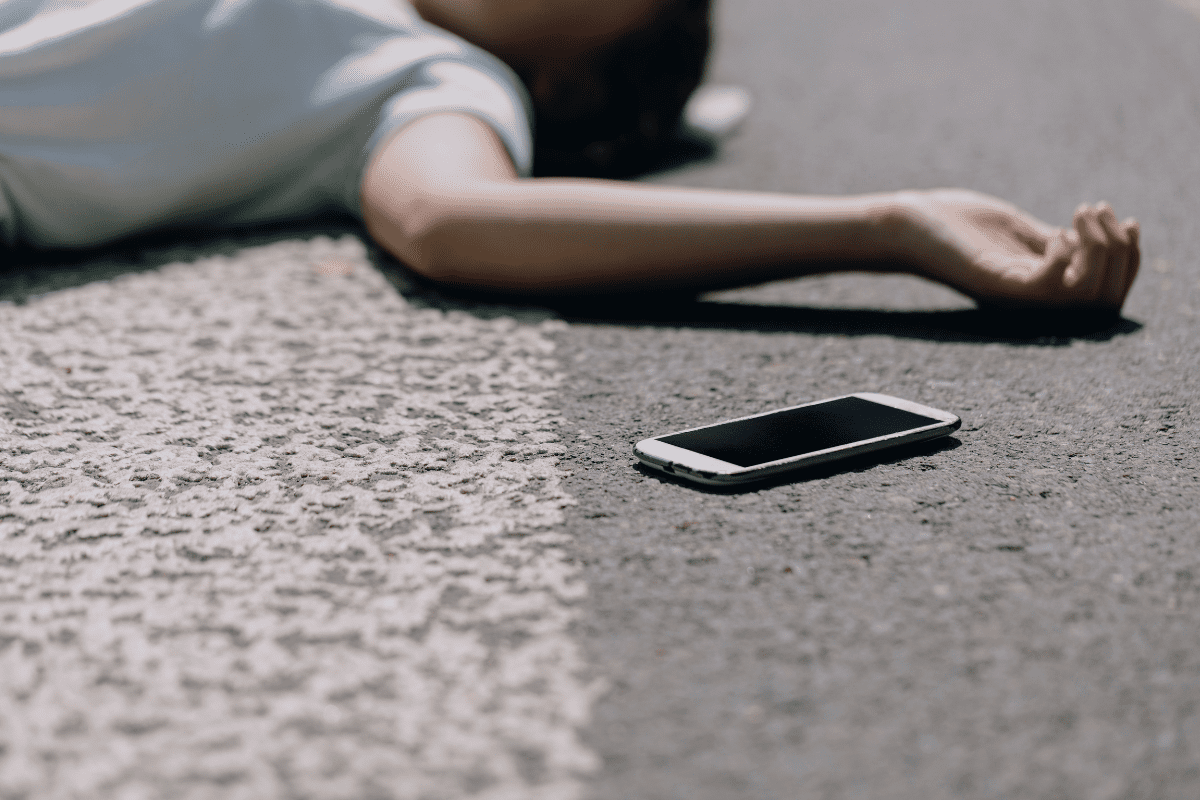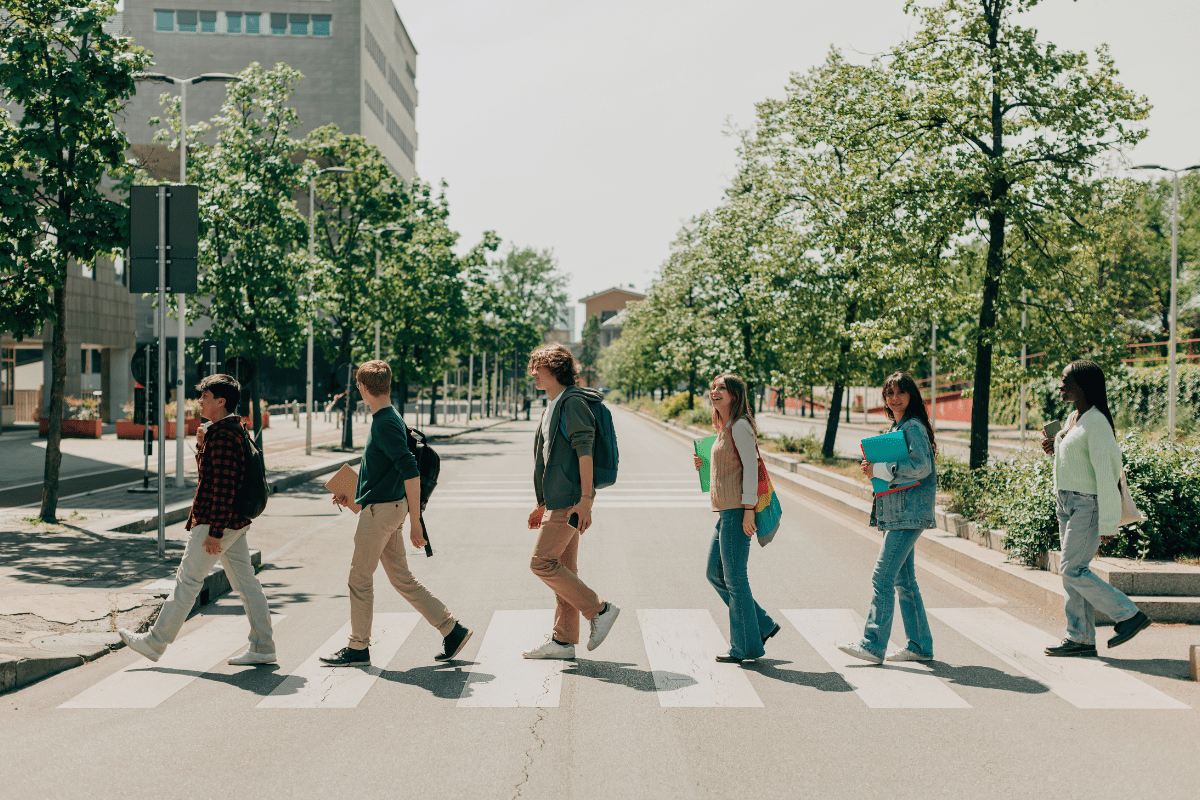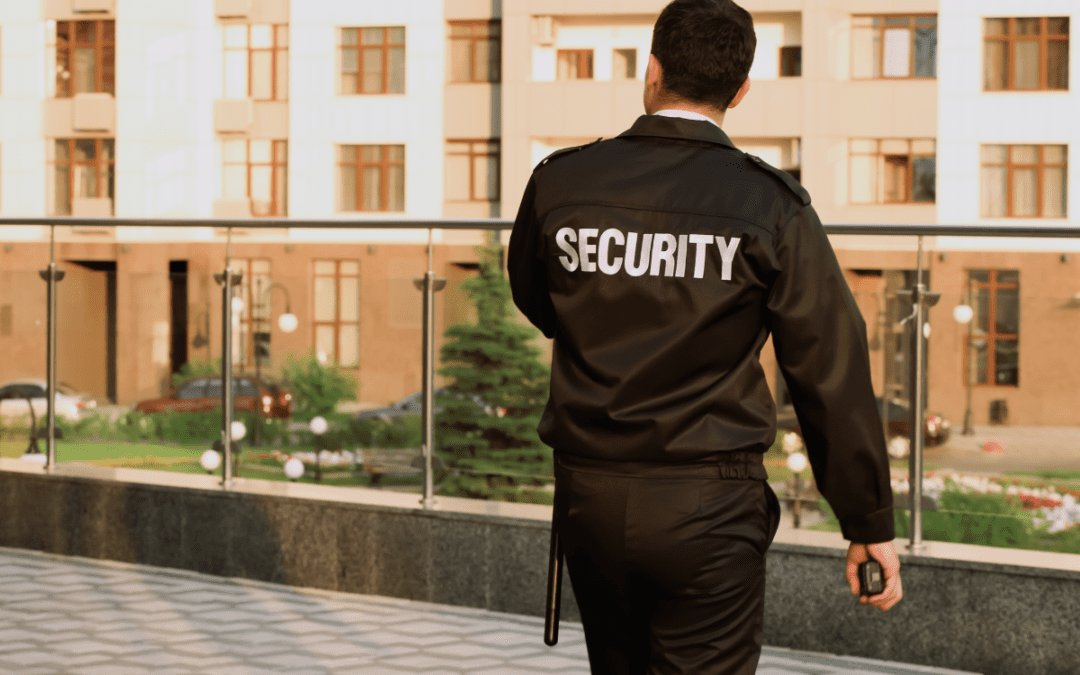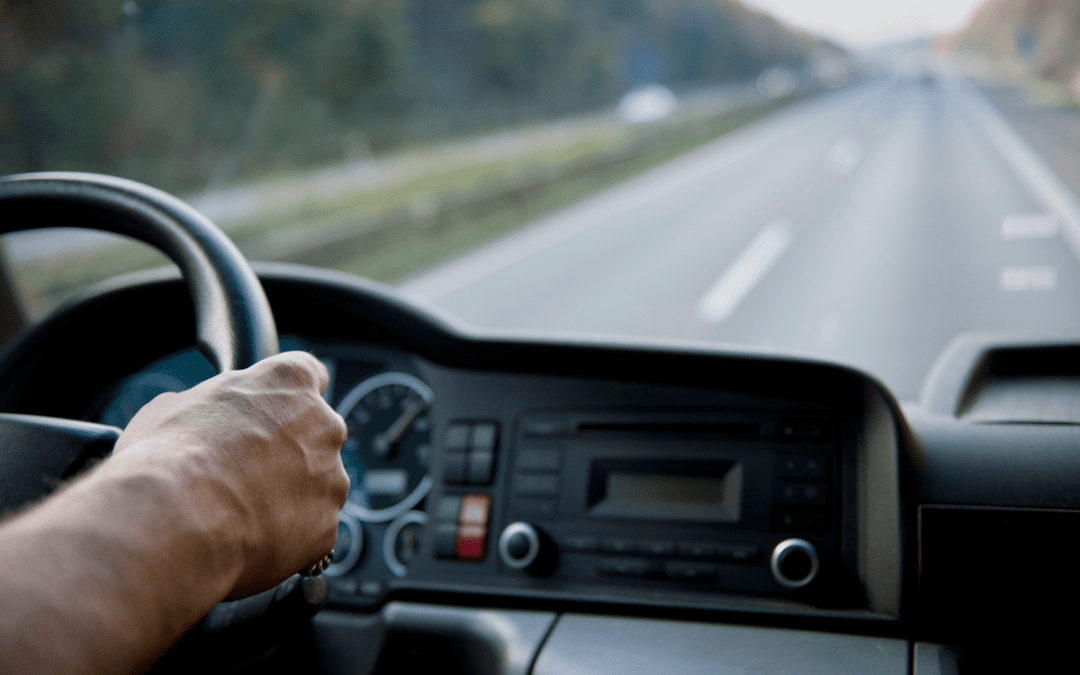As experienced pedestrian accident attorneys, we understand the complexities and challenges that arise after a pedestrian accident. Each year, thousands of pedestrians are injured or killed in traffic-related incidents, making it crucial to understand your legal rights and safety measures on the road. This guide offers a comprehensive look at the legal aspects of pedestrian safety, highlighting the common causes of accidents, preventive measures, and the role an attorney plays in protecting your rights if you’re involved in an accident.
Navigating the aftermath of a pedestrian accident can be overwhelming, especially when dealing with injuries, medical bills, and insurance companies. Our goal is to equip you with the knowledge to make informed decisions and ensure your rights are safeguarded every step of the way.
Understanding Pedestrian Accidents
Pedestrian accidents occur when a person on foot is struck by a motor vehicle, such as a car, truck, or motorcycle. These incidents often result in severe injuries or even fatalities due to the vulnerability of pedestrians compared to vehicle occupants. Understanding the nature and causes of these accidents is the first step in recognizing your rights and how to protect yourself legally and physically.
What is a Pedestrian Accident?
A pedestrian accident specifically involves a vehicle colliding with a person who is walking, running, jogging, or sitting. Unlike other motor vehicle accidents, pedestrian accidents tend to result in more serious injuries because pedestrians have no protection against the impact of a vehicle. These accidents can occur in various settings, such as crosswalks, sidewalks, parking lots, or even on roads where pedestrians are not expected to be.
Common Causes of Pedestrian Accidents
Pedestrian accidents can happen for numerous reasons, many of which involve driver negligence. Understanding these causes helps you identify risk factors and potential liability in an accident. Here are the most common causes:
- Distracted Driving: Drivers using smartphones, GPS devices, or engaging in other distractions are less likely to notice pedestrians.
- Speeding and Reckless Driving: Higher speeds reduce a driver’s reaction time and increase the severity of impact when a collision occurs.
- Failure to Yield Right of Way: Drivers often fail to yield to pedestrians at crosswalks, leading to dangerous situations.
- Poor Visibility and Weather Conditions: Nighttime, fog, rain, and other adverse weather conditions can make it difficult for drivers to see pedestrians.
- Drunk or Impaired Driving: Alcohol and drugs impair a driver’s judgment, reaction time, and ability to safely operate a vehicle.
- Lack of Pedestrian Signals or Crosswalks: Areas without designated crosswalks or pedestrian signals pose a higher risk for accidents as pedestrians and drivers may misjudge each other’s intentions.
Pedestrian Accident Statistics: A Closer Look
Pedestrian accidents are a significant safety concern in South Florida and across the United States. According to the National Highway Traffic Safety Administration (NHTSA), nearly 6,000 pedestrians were killed in traffic crashes in the U.S. in the most recent year reported, and over 137,000 were treated in emergency departments for non-fatal crash-related injuries.
In South Florida alone, pedestrian accidents remain alarmingly high. A recent study showed that these accidents continue to be a critical issue, particularly in urban areas where foot traffic is dense. The combination of high traffic volume, distracted driving, and insufficient pedestrian infrastructure contributes to the high number of incidents.
Understanding these statistics highlights the importance of being vigilant and knowing your rights as a pedestrian. Being aware of the common causes and high-risk factors can help you stay safer on the roads, but if an accident does occur, knowing how to respond legally is crucial.
Preventive Measures for Pedestrian Safety
Staying safe as a pedestrian involves more than just looking both ways before crossing the street. By adopting proactive safety measures, both pedestrians and drivers can significantly reduce the risk of accidents. Whether you’re walking to work, exercising, or simply enjoying a stroll, it’s important to be aware of your surroundings and take steps to protect yourself. Here are some preventive measures that can help keep you safe on the road.
Safety Tips for Pedestrians
Pedestrian safety starts with awareness and adherence to traffic rules. Here are key tips to help pedestrians stay safe:
- Use Crosswalks and Obey Traffic Signals: Always cross streets at designated crosswalks or intersections where drivers expect pedestrians. Wait for the walk signal and look both ways before stepping onto the road.
- Avoid Distractions: Stay alert by keeping your eyes and ears on the road. Avoid using your phone, wearing headphones, or engaging in any activity that diverts your attention from traffic.
- Wear Visible Clothing: If you’re walking at night or in low-light conditions, wear reflective or brightly colored clothing to increase your visibility to drivers.
- Walk on Sidewalks When Available: If sidewalks are not available, walk facing traffic as far to the left as possible. This gives you a better view of oncoming vehicles and more time to react if needed.
- Stay Sober and Alert: Avoid walking near traffic if you’ve been drinking alcohol or are under the influence of drugs. Impaired judgment and slow reaction times can put you at risk.
Safety Tips for Drivers to Avoid Hitting Pedestrians
Drivers have a critical role in preventing pedestrian accidents. By practicing safe driving habits, drivers can protect themselves and others on the road. Key tips for drivers include:
- Slow Down in High Pedestrian Areas: Areas near schools, shopping centers, and residential neighborhoods often have heavy foot traffic. Slowing down allows you more time to react to unexpected movements.
- Yield to Pedestrians at Crosswalks: Always stop and give the right of way to pedestrians at marked crosswalks. Be cautious of pedestrians stepping out suddenly, especially at intersections.
- Avoid Distractions While Driving: Texting, eating, or adjusting your GPS while driving takes your attention off the road. Keep your focus on driving and be aware of pedestrians around you.
- Never Pass Vehicles Stopped at Crosswalks: Other vehicles may be stopped to let pedestrians cross. Passing these stopped vehicles increases the risk of hitting a crossing pedestrian.
South Florida Pedestrian Safety Initiatives
In South Florida, various safety initiatives aim to protect pedestrians and reduce the number of accidents. Local governments, along with community organizations, are actively working on improving pedestrian infrastructure, raising awareness, and enforcing traffic laws. Key initiatives include:
- Enhanced Crosswalk Designs: The introduction of flashing beacons, better lighting, and clearly marked crosswalks has made it safer for pedestrians to navigate busy roads.
- Public Awareness Campaigns: Campaigns such as Walk Safe and Bike Safe educate pedestrians and drivers on best practices to ensure safety.
- Stricter Law Enforcement: Police enforcement of traffic laws, particularly those related to yielding and distracted driving, aims to reduce pedestrian accidents significantly.
By being proactive and vigilant, both pedestrians and drivers can play a significant role in reducing accidents and ensuring safety on the road. These preventive measures are not just recommendations but crucial steps that can save lives.
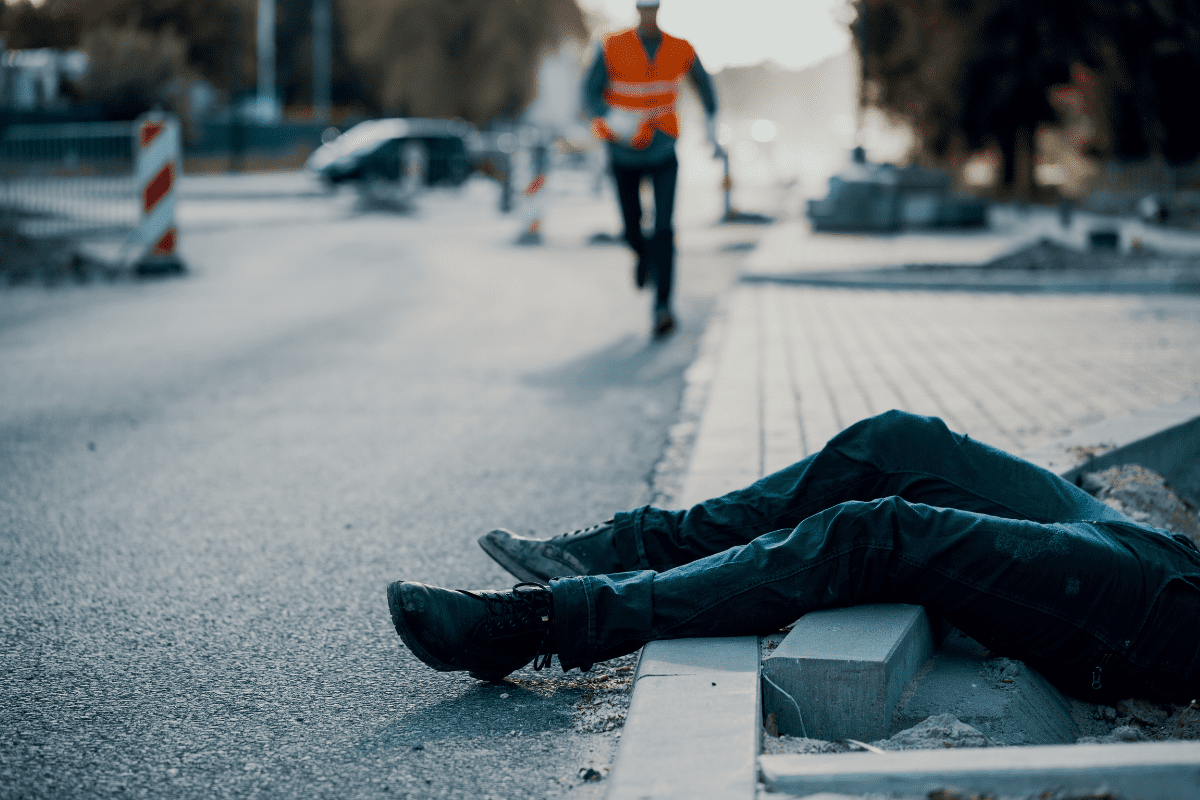
Legal Rights of Pedestrian Accident Victims
If you’ve been involved in a pedestrian accident, understanding your legal rights is essential. Pedestrian accident victims often face severe injuries, costly medical bills, and the daunting task of dealing with insurance companies. Knowing your rights can help you navigate the aftermath of the accident, protect your interests, and ensure you receive the compensation you deserve.
Who is at Fault in a Pedestrian Accident?
Determining fault in a pedestrian accident is critical because it influences who is liable for the damages. Fault can be attributed to either the driver or the pedestrian, depending on the circumstances of the accident. Here’s a closer look at how fault is determined:
- Driver’s Fault: In most cases, drivers are at fault due to negligence, such as speeding, failing to yield, or driving under the influence. If the driver violated traffic laws, such as not stopping at a crosswalk, they are likely to be held responsible.
- Pedestrian’s Fault: Pedestrians can also be at fault if they jaywalk, cross against traffic signals, or behave unpredictably. Even when partially at fault, a pedestrian may still be eligible for compensation under Florida’s comparative negligence rule, which reduces the compensation based on the percentage of fault.
- Shared Fault: Sometimes, both parties share fault. For instance, if a pedestrian crossed without a signal but the driver was also speeding, fault may be shared, and compensation adjusted accordingly.
Understanding fault is crucial in any pedestrian accident case. It is important to gather evidence, such as witness statements, accident reports, and traffic camera footage, to build a strong case.
Rights of Injured Pedestrians
Pedestrians injured in accidents have specific rights under Florida law. These rights ensure that victims can seek justice and recover compensation for their injuries. Here’s what you should know about your rights as an injured pedestrian:
- Right to Compensation: Injured pedestrians have the right to seek compensation for various damages, including medical bills, lost wages, pain and suffering, and any long-term rehabilitation costs. This compensation is typically pursued through the at-fault driver’s insurance or, in some cases, through a personal injury lawsuit.
- Protection Against Insurance Companies: Insurance companies often attempt to minimize payouts or deny claims altogether. As an injured pedestrian, you have the right to challenge these decisions. Consulting with a pedestrian accident attorney can help protect your interests and negotiate with insurers on your behalf.
- Time Limits for Filing a Claim: Florida law imposes a statute of limitations on personal injury claims. This means you must file your claim within a specific time frame, usually two years from the date of the accident. Failing to file within this period may forfeit your right to seek compensation. For more information on why your case may be refused, read our article on common reasons personal injury firms may refuse a case.
Common Pedestrian Injuries and Compensation
Pedestrian accidents can result in a wide range of injuries, some of which can be life-altering. Understanding the types of injuries and potential compensation is essential for managing your recovery and legal claims.
Common Injuries:
- Traumatic Brain Injuries (TBI): A severe blow to the head can lead to concussions or more serious brain injuries, affecting cognitive function, memory, and overall quality of life.
- Spinal Cord Injuries: Damage to the spinal cord can result in partial or complete paralysis, requiring extensive rehabilitation and long-term care.
- Broken Bones and Fractures: Common in pedestrian accidents, fractures can involve lengthy recovery times and may require surgery or physical therapy.
- Soft Tissue Injuries: Damage to muscles, ligaments, and tendons can cause chronic pain and mobility issues.
Compensation Categories:
- Medical Expenses: Covers the costs of emergency care, surgeries, medication, and rehabilitation.
- Lost Wages: Compensation for time missed at work due to injuries and recovery.
- Pain and Suffering: Non-economic damages that account for physical pain and emotional distress caused by the accident.
- Long-term Care and Rehabilitation: For severe injuries that require ongoing medical attention or modifications to daily living.
Knowing your rights and the compensation you are entitled to is essential for any pedestrian accident victim. Legal guidance can help you secure the full compensation needed to recover and move forward after an accident.
Steps to Take After a Pedestrian Accident
If you’re involved in a pedestrian accident, the actions you take immediately after the incident can significantly impact your health, your legal rights, and the success of any future claims. Knowing what to do in the moments following an accident can help you gather the evidence you need, protect your rights, and strengthen your case if you decide to seek compensation.
What to Do Immediately After Being Hit by a Car
Your priority after an accident is your safety and well-being. Here are the crucial steps to take if you’re injured in a pedestrian accident:
- Call Emergency Services: Dial 911 immediately to report the accident and request medical assistance. Even if your injuries seem minor, getting evaluated by a medical professional is essential as some injuries, such as internal bleeding or concussions, may not be immediately apparent.
- Seek Medical Attention: If emergency responders arrive, allow them to check your injuries. If you’re able, visit a doctor or emergency room promptly to document your injuries. Medical records will play a crucial role in your claim.
- Gather Evidence at the Accident Scene: If possible, collect evidence from the accident scene. Take photos of your injuries, the vehicle involved, the location, and any visible traffic signs or signals. If there are witnesses, ask for their contact information as their testimony could be valuable.
- File an Accident Report: Ensure that a police report is filed, and request a copy for your records. This report will provide an official account of the accident, including statements from you, the driver, and any witnesses. This is particularly important in determining fault and liability.
- Avoid Admitting Fault or Making Statements: Be cautious about what you say to the driver, police, and insurance companies. Even an apology can be misconstrued as an admission of fault. Stick to the facts when describing the incident and avoid speculation about who is to blame.
Reporting the Accident and Dealing with Insurance Companies
Once you’ve received medical care, you’ll need to deal with the insurance companies involved. Here’s how to handle this process effectively:
- Notify Your Insurance Company: Report the accident to your insurance provider as soon as possible. Provide them with factual details but avoid giving recorded statements until you’ve consulted with an attorney.
- Be Cautious with Insurance Adjusters: Insurance adjusters may contact you to discuss the accident and propose a settlement. Remember, their goal is to minimize payouts, so avoid making statements that could jeopardize your claim.
- Document All Communication: Keep a detailed record of all conversations with insurance companies, including dates, times, and what was discussed. This information can be critical if disputes arise later.
- Seek Legal Advice Before Accepting Settlements: Insurance companies often push quick settlements that are far below what you may be entitled to. It’s crucial to consult with a pedestrian accident attorney who can review the offer and negotiate on your behalf to ensure you receive fair compensation.
Why You Shouldn’t Settle Without Consulting an Attorney
Settling your claim without proper legal guidance can result in inadequate compensation that fails to cover your long-term medical needs, lost wages, and other damages. Here’s why consulting an attorney is vital:
- Maximizing Compensation: Attorneys have the expertise to evaluate the true value of your claim, including future medical expenses, loss of earning capacity, and non-economic damages like pain and suffering.
- Navigating Legal Complexities: Personal injury law can be complex, especially when fault is contested or when multiple parties are involved. An experienced attorney will handle these complexities and work to prove the other party’s negligence.
- Protection from Insurance Tactics: Insurance companies often use tactics to reduce their liability, such as disputing the severity of your injuries or arguing that you were partially at fault. A skilled attorney can counter these tactics and advocate for your best interests.
Taking the right steps after a pedestrian accident can make a significant difference in the outcome of your case. By securing proper evidence, seeking immediate medical attention, and consulting with an experienced attorney, you can protect your rights and improve your chances of receiving the compensation you deserve.
How a Pedestrian Accident Attorney Can Help You
After a pedestrian accident, many victims find themselves overwhelmed by medical bills, lost wages, and the complex legal process of seeking compensation. A pedestrian accident attorney can provide invaluable support during this challenging time, ensuring that your rights are protected and your case is handled professionally. Here’s how an experienced attorney can make a difference in your pedestrian accident claim.
The Role of a Pedestrian Accident Attorney
A pedestrian accident attorney serves as your advocate, guiding you through every step of the legal process. Their role is to manage the intricacies of your case while you focus on your recovery. Here’s what you can expect from an attorney:
- Investigating the Accident: Attorneys conduct thorough investigations to gather evidence that supports your claim. This includes analyzing police reports, interviewing witnesses, collecting surveillance footage, and consulting with accident reconstruction experts if necessary.
- Evaluating Damages: An attorney will assess the full extent of your injuries and losses, including immediate medical expenses, future treatment costs, lost wages, and non-economic damages like pain and suffering. This comprehensive evaluation ensures that you pursue the maximum compensation available.
- Negotiating with Insurance Companies: Insurance companies often attempt to minimize their payouts by offering lowball settlements. Attorneys are skilled negotiators who understand these tactics and will advocate for a fair settlement that reflects the true value of your claim.
- Handling Legal Paperwork and Deadlines: Filing a pedestrian accident claim involves a significant amount of paperwork, deadlines, and legal protocols. An attorney ensures that all documentation is accurate and submitted on time, preventing delays or denials that could jeopardize your case.
Benefits of Hiring an Experienced Pedestrian Accident Attorney
Hiring an experienced attorney can significantly improve the outcome of your case. Here are the key benefits:
- Expertise in Pedestrian Accident Cases: Attorneys who specialize in pedestrian accidents have in-depth knowledge of traffic laws, pedestrian rights, and the common causes of these incidents. This expertise allows them to build a strong case tailored to the specifics of your situation.
- Access to Medical and Legal Experts: Experienced attorneys have access to a network of medical professionals, accident reconstruction specialists, and other experts who can provide testimony and evidence to strengthen your case.
- Representation in Court if Needed: While many cases are settled out of court, some may require litigation. If negotiations fail, your attorney will be prepared to represent you in court, presenting your case before a judge and jury to fight for the compensation you deserve.
- Peace of Mind: Dealing with an accident’s aftermath can be stressful, especially when navigating legal challenges. An attorney provides the peace of mind that your case is in capable hands, allowing you to focus on your recovery.
Free Consultation: What to Expect When You Meet Your Attorney
The pedestrian accident attorneys at Bodden and Bennett Law Group, offer a free consultation to discuss your case. This initial meeting is an opportunity to ask questions, understand your legal options, and determine whether the attorney is the right fit for you. Here’s what to expect:
- Case Evaluation: The attorney will review the details of your accident, including the circumstances surrounding the incident, the extent of your injuries, and any evidence you’ve collected.
- Legal Advice: You’ll receive advice on your legal rights, potential compensation, and the next steps in the process. The attorney will outline how they can assist you and what strategies they would employ in your case.
- Cost and Fees: Most personal injury attorneys work on a contingency fee basis, meaning you won’t pay unless you win your case. During the consultation, the attorney will explain their fee structure and any costs associated with pursuing your claim.
Hiring an attorney can be one of the most critical decisions you make following a pedestrian accident. With the right legal support, you can confidently pursue the compensation you deserve while ensuring that your rights are fully protected.
Frequently Asked Questions About Pedestrian Accidents
Navigating the aftermath of a pedestrian accident can be confusing, especially when you’re dealing with injuries, insurance companies, and legal complexities. To help you better understand your rights and the steps involved in pursuing a claim, we’ve compiled answers to some of the most frequently asked questions about pedestrian accidents.
What Should I Do If I’m Injured in a Pedestrian Accident?
If you’re injured in a pedestrian accident, your first priority is to seek medical attention, even if your injuries seem minor at first. Next, report the accident to the police and document everything you can at the scene, including taking photos and gathering witness information. Finally, contact a pedestrian accident attorney to discuss your case and legal options.
How Do I Prove Fault in a Pedestrian Accident Case?
Proving fault involves showing that the driver was negligent, such as failing to yield, speeding, or driving distracted. Evidence such as police reports, witness statements, traffic camera footage, and expert testimony can all help establish fault. An experienced attorney will investigate the accident thoroughly to build a strong case on your behalf.
What Compensation Can I Recover After a Pedestrian Accident?
Compensation in a pedestrian accident case can include medical expenses, lost wages, pain and suffering, rehabilitation costs, and more. The exact amount will depend on the severity of your injuries and the impact on your life. An attorney can provide a detailed evaluation of the damages you are entitled to pursue.
How Long Do I Have to File a Personal Injury Claim in Florida?
In Florida, the statute of limitations for personal injury claims, including pedestrian accidents, is generally two years from the date of the accident. Failing to file within this period may forfeit your right to seek compensation, making it crucial to act quickly and consult with an attorney to protect your claim.
What if the Driver Who Hit Me Was Uninsured?
If the driver who hit you was uninsured or underinsured, you may still have options to recover compensation. This can include filing a claim with your own insurance under your uninsured motorist coverage or pursuing a personal injury lawsuit against the driver. An attorney can guide you through these options and help determine the best course of action.
How Much Does a Pedestrian Accident Lawyer Cost?
Most pedestrian accident attorneys, including us, work on a contingency fee basis. This means you won’t pay any upfront fees, and the attorney only gets paid if you win your case. During your initial consultation, your attorney will explain the fee structure, so you fully understand any costs involved.
Can a Pedestrian Accident Attorney Help with Insurance Disputes?
Yes, a pedestrian accident attorney can assist with insurance disputes, including negotiating with adjusters, challenging low settlement offers, and representing you in court if necessary. Insurance companies often prioritize their profits over your needs, so having legal representation can ensure that you receive a fair and just settlement.
Contact Bodden and Bennett Law Group for a Free Case Evaluation
Get Help from Experienced Pedestrian Accident Attorneys Today
If you’ve been injured in a pedestrian accident, don’t navigate the legal complexities alone. At Bodden and Bennett Law Group, our experienced pedestrian accident attorneys are here to help you every step of the way. From investigating your accident to negotiating with insurance companies, we are dedicated to securing the compensation you deserve. Contact us today for a free case evaluation and let us fight for your rights.

